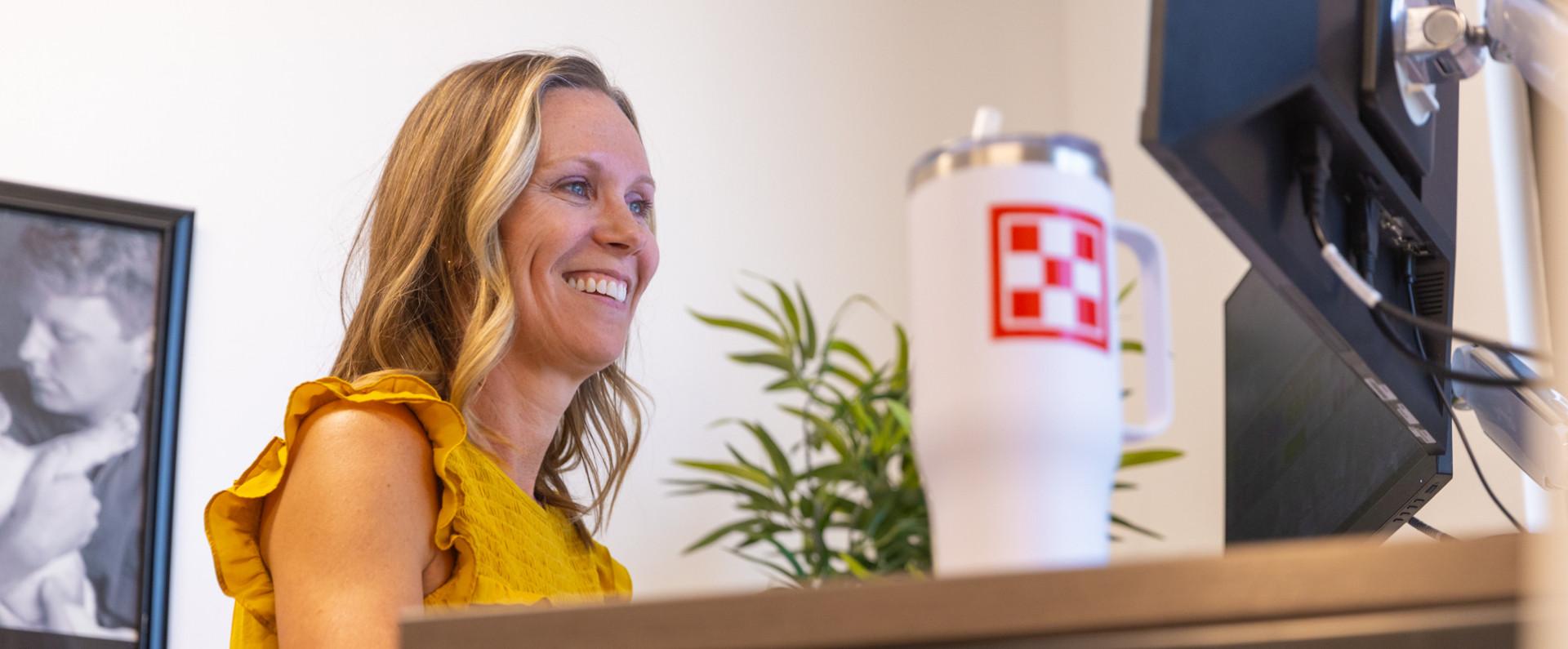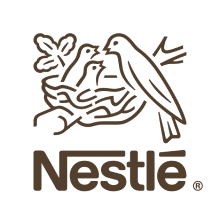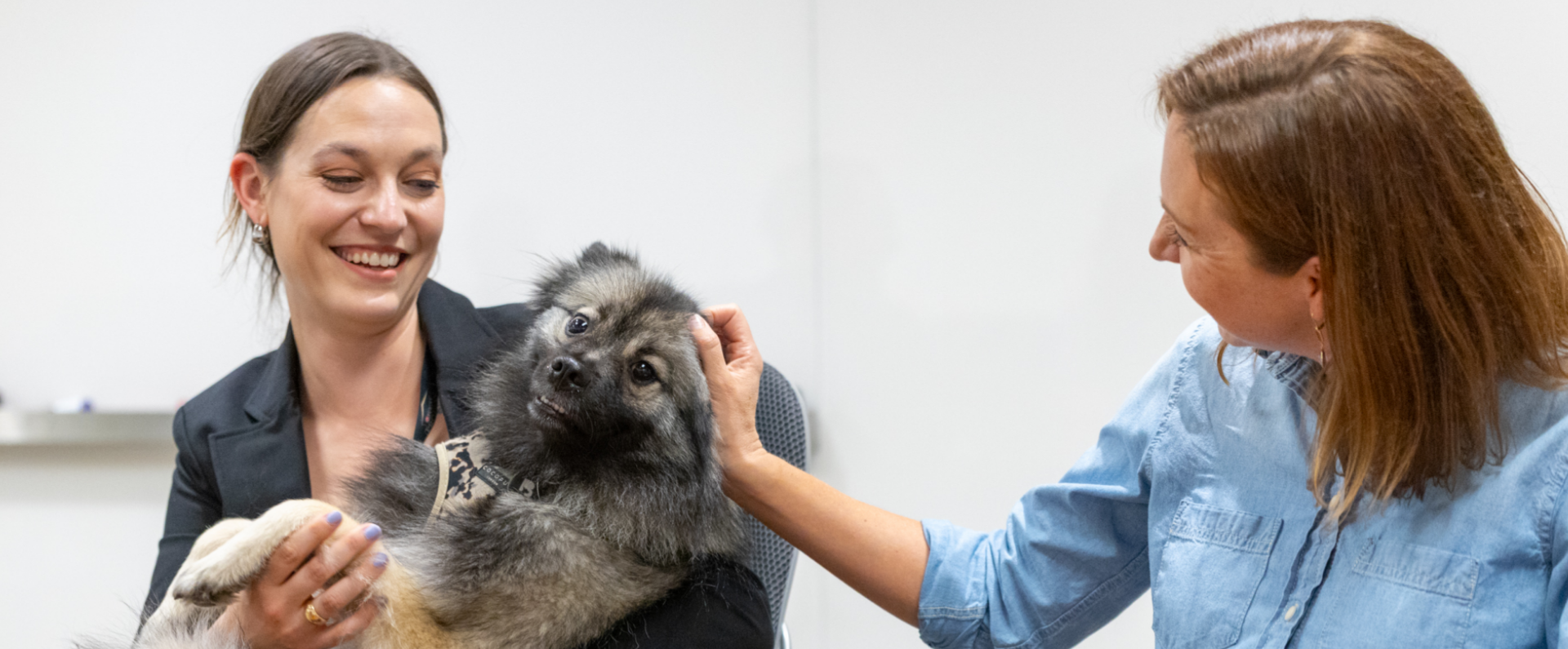
Flexible Work Arrangements: A Look from 3 Purina Associates’ Desks
Kim, Purina Veterinary Consultant—Sales
Describe your work environment.
In my current role as a Professional Veterinary Consultant (PVC), my home office is in the field, covering central and northeast Wisconsin. In each of my roles in the field with Purina, I’ve really been able to tailor my work day to best meet the needs of the veterinary clinics I work with. For the most part, my work day is Monday–Friday and as I am an early morning person, working from home allows me to make this time productive. I take care of emails, complete any follow up items on my calendar, complete pre-call planning and clear my day to focus on the clinics I will be working with that day. My territory is also quite large, with some days involving a lot of driving, so the flexibility here is key. I plan these long days around others that do not involve so much drive time. This flexibility has really created a better work-life balance.
Does your team work from home, too? How have you had to adjust with a flexible working arrangement?
Yes, as a PVC, my entire team works from home. With the entire team remote, planning is really key, as well as having a communication channel available where the team can interact and use each other’s knowledge and expertise. We have set days and times for team calls, these are set up on our schedules months in advance, making it easy to build a clinic call schedule around them. The calls are used as a time for our Regional Manager to share updates from corporate, region-specific updates and also a time for the team to share any key findings. We also make use of text messaging frequently. It allows everyone to have access to your teammates on an ongoing basis for help answering questions, input on handling a situation, or just for a pick-me-up if you are having a tough day.
Have you always worked from home? If not, tell us about your transition.
I have only worked from home for the last 1.5 years. Prior to that, I was in a contractor role with Purina as an Inside Sales Representative and worked in an office. The transition from going to an office daily to working out of my home was, for the most part, very easy. The challenges are working through the lack of social interaction when you no longer have a co-worker in a cubicle next to you. You have to seek new ways to find someone to get input from, ask questions of, or assist with resolution of a problem. Making use of tools like Skype and text messaging are life savers here.
How has a flexible working arrangement benefited you?
Working from home has really given me back time on a daily basis. When I worked in an office, my commute time was about 45 minutes one way. The gift of 90 minutes back in my day is wonderful. The flexibility has also really allowed me to better meet the needs of the customers I work with. An early morning or later evening meeting is much easier to accommodate if your home is your office.
Rachael, Manager – Organizational Development
Describe your work environment.
I am a remote associate and have been working from home in Iowa for the past 8 years. I mainly travel to our corporate office in St. Louis for one week each month. I also travel to our factory locations when needed.
Does your team also work from home? How have you had to adjust with a flexible working arrangement?
My team is currently spilt between being based in St. Louis and working remote. I am based in Iowa, I have a member on my team who is based in North Carolina and 2 additional team members who are based in St. Louis.
Have you always worked from home? If not, tell us about your transition.
I have been remote for the past 8 years. Prior to that, I was based in St. Louis for 3 years before I relocated to Iowa. It was challenging trying to figure out my new routine, my ways of working, how I help my team adjust to the fact that I am no longer onsite and to the broader team that I am a part of. At the time, I was the first team member to begin working remote so it was a big adjustment for everyone. I had to remind people that if you would normally stop by my office to ask a question that it was ok to call me. In the beginning my manager even placed my picture on a chair when we had team meetings. Since I was the only one having to call into the meeting, this reminded everyone that I was still there. I also made an effort to spend the first couple minutes of meetings talking about our weekend or doing an ice breaker activity. Since we are split up as a team, we don’t get to have “water cooler” talks so this allows us time to have those moments so that we still feel connected as a team even though we don’t get to see each other often.
I had to set-up new personal working routines to make sure I stayed connected. On conference calls, it is easy to get distracted with other activities and start to multi-task. I found out quickly that I needed to turn off my email notification pop-up as I would want to check email during calls. I also found it easy to be silent on calls because when there is a room of 5 people talking, it can be hard to jump in so you have to remind yourself that if you were in the room would you have joined in on the conversation. If yes, then you need to speak up.
How has a flexible working arrangement benefited you?
The flexibility for me has been wonderful for me and my family as it presents a work-life balance for me. It also allows for less distractions which allows me to focus on value added tasks for the company. Finally, I can see how it’s helped me improve my communication skills.
Justine, Consultant—Digital Brand Management
Describe your work environment.
I primarily work from my home office in Camano Island, WA—a rural community about an hour and a half north of Seattle. I have an office set up in my house I “commute” to daily. I keep a set schedule, but feel like working from home gives me greater balance in my life.
Does your team work also work from home? How have you had to adjust with a flexible working arrangement?
My team is based out of St. Louis and predominantly sits in our U.S. Headquarters. It’s important to me to go through the working day at the same time they do, so I log on at 6 a.m. each morning and work in the Central Time Zone. Working from Washington has required me to rely much more on calls, chats, and emails. I miss a lot of the “water cooler” chatter, so I try and intentionally work more small talk into my meetings and Skype with my colleagues throughout the day. I’ve also had to work heavily on my speech mechanics to make sure than my presentation on the phone is engaging and clear when my non-verbal communication isn’t visible—I am still working on that!
Have you always worked from home? If not, tell us about your transition.
I worked at our St. Louis Headquarters for a few years before returning to my hometown in Washington. My supervisor and teammates were very supportive which made the transition much easier, but there were definitely some challenges in adapting to my new work environment. The first thing that stands out was getting fast enough internet to support my online activities. I also learned that it was important to proactively communicate with my family when I had important meetings or calls and needed the house to be silent. I am still learning how to take breaks throughout the day. Purina has a beautiful headquarters with lot of perks that encourage you to step away from your desk and walk around campus; I don’t get the same exercise walking to my coffee pot in the kitchen. Finally, while we have always celebrated Pets at Work at Purina, it was a new experience to have my two dogs present for every meeting of my day. Playtime runs on their schedule—not mine.
How has a flexible working arrangement benefited you?
Working from home has added a lot of balance to my life. Being home during the day allows me to be available to take care of our dog with special needs. I love that I don’t have to spend hours of my day combatting Seattle traffic patterns. I even appreciate some of the small benefits like being able to unload the dishwasher or vacuum during lunch. For me, the biggest benefit is working Central Time while living Pacific Time. I use the extra hours to coach after school athletics, which allows me to get some face time with people and daily exercise. At the end of the day, I still have more energy when I get home.
How does your employer enable you to work from home?
Nestlé Purina was a great help in my initial office set up providing the technology resources I need to be successful. Outside of my technical set up, my supervisor has helped me to navigate personal and professional development opportunities. Finally, if I have a business need to travel to campus, I am able to fly into St. Louis to complete work as needed.




